The Mark Levinson ML-7 preamplifier is a classic and sought-after piece of vintage high-end hi-fi. Come with me as I repair one.
Most who love finer hi-fi gear will be familiar with Mark Levinson, one of the great names in high-end audio. The Mark Levinson ML-7 is one of the most famous high-end preamplifiers from back in the day. Featuring near laboratory-grade build and component quality, very unusual for hi-fi gear at the time, plus stellar sound, these are highly prized preamplifiers today, fetching HUGE money!
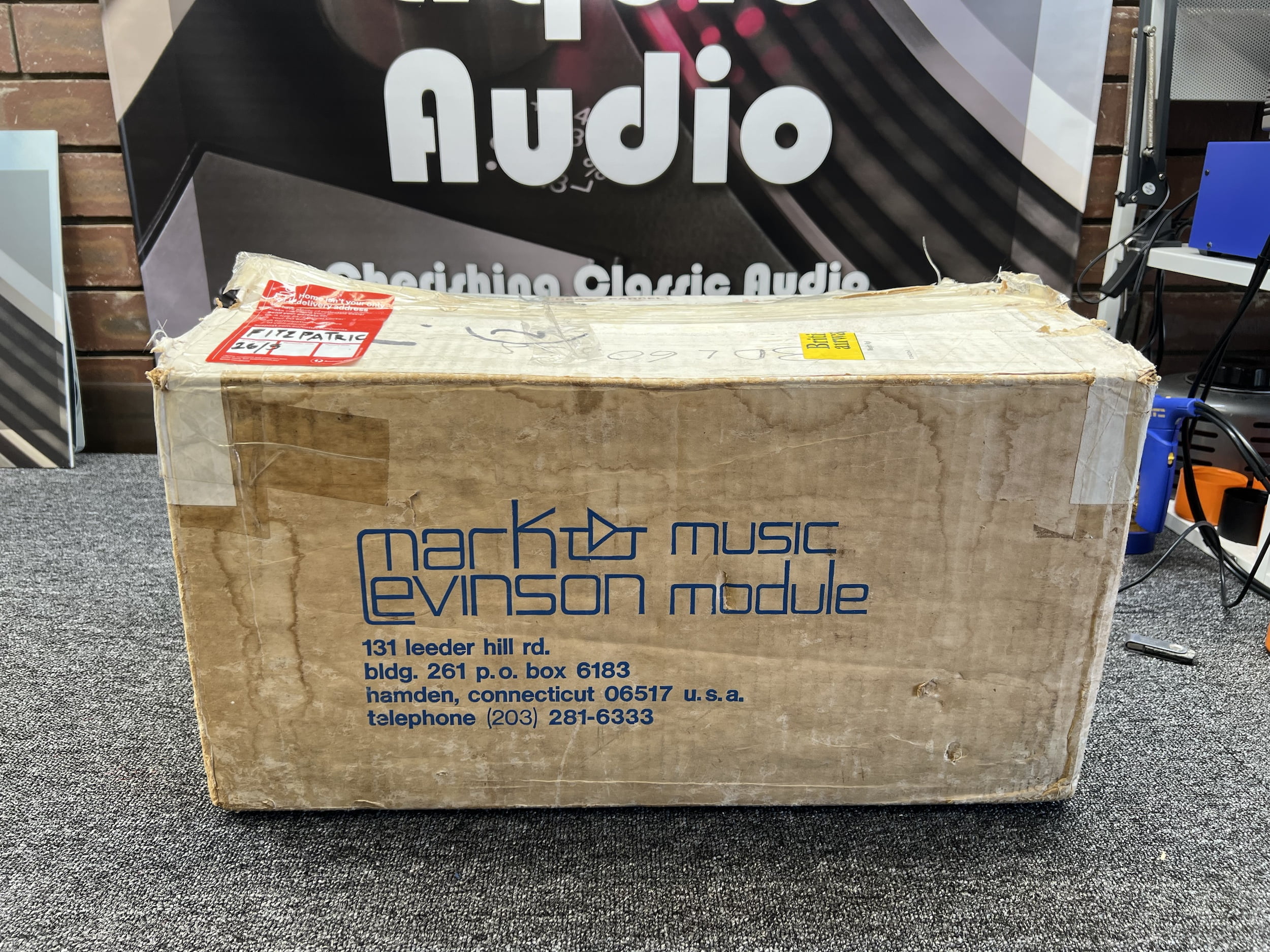
Lab-Grade (Well, Nearly)
Collecting and maintaining lab test and measurement instruments is a hobby of mine and I have a range of premium equipment that I use for the work I do. This type of gear is built for more demanding applications and long service life, is better engineered and has far fewer compromises than most consumer electronics.
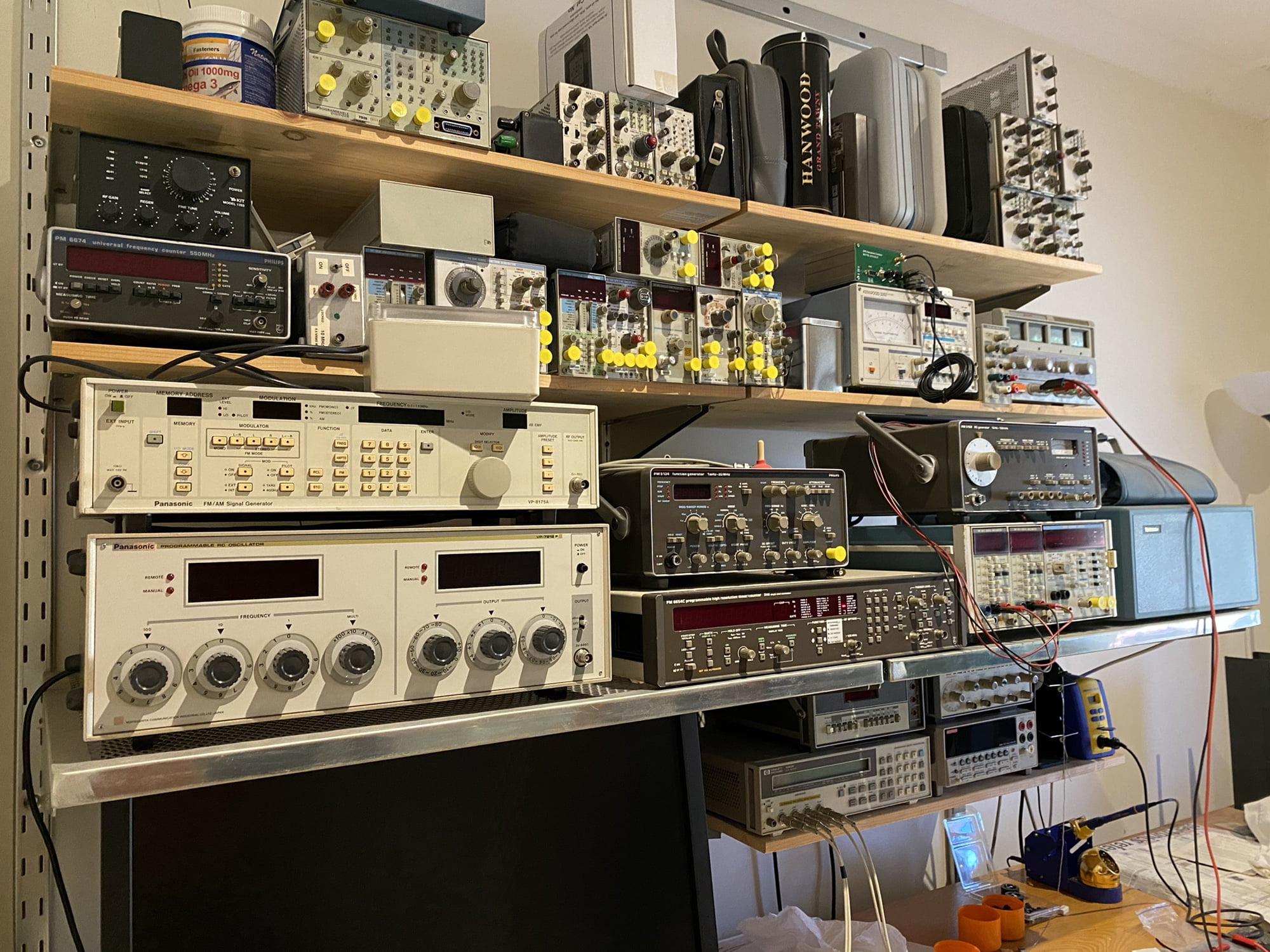
There is a lot to learn about electronic design and manufacture from gear like this. Working on this stuff helped me get to where I am now with Liquid Audio and fuelled my love of well-engineered electronics. So I’m fond of well-built gear and have an aversion to poorly built gear. It runs deep, and there isn’t a great deal of truly beautifully made consumer hi-fi out there.
Mark Levinson as a brand is/was famous for bringing this high-end, lab-class build ethos into the hi-fi space. Amplifiers like the legendary Mark Levinson ML-2 class-A power amplifiers really catapulted this type of design and build into hi-fi showrooms, and people’s living rooms.
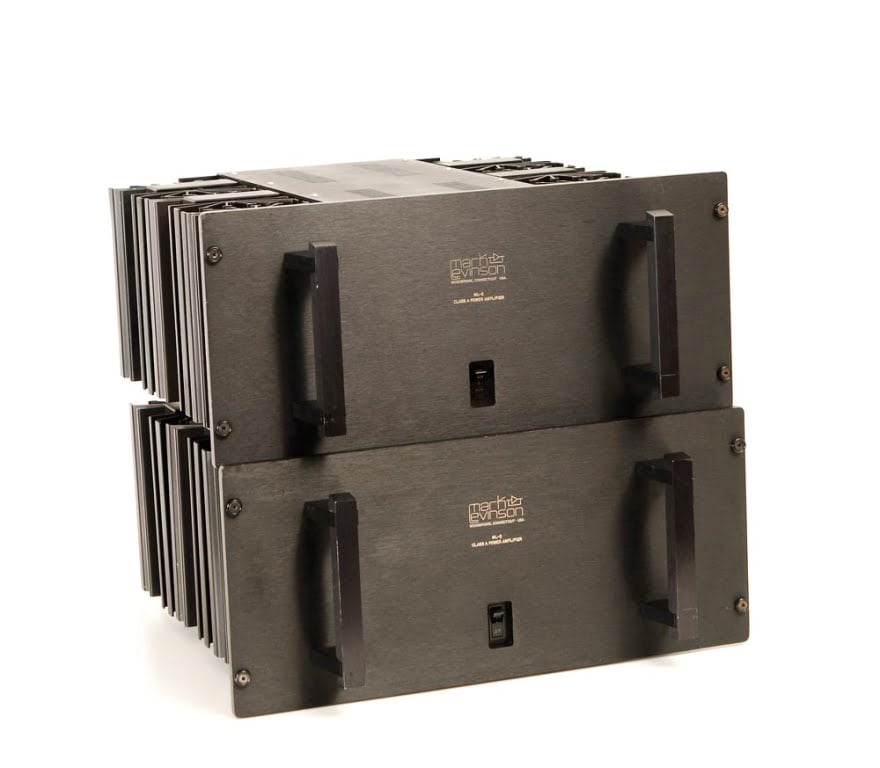
Anyway, the Mark Levinson ML-7 preamp dates all the way back to 1980, so it’s a true high-end pioneer. And what’s high-end about it you might ask? Well, everything including the build, parts, layout, specs and features screams high-end and vinyl, words that very much go together as you know.
Realistically, the Mark Levinson ML-7 is not as well built as the Tektronix, Hewlett Packard and Marconi gear I own, but it’s certainly a cut above regular hi-fi gear, like this, for example…
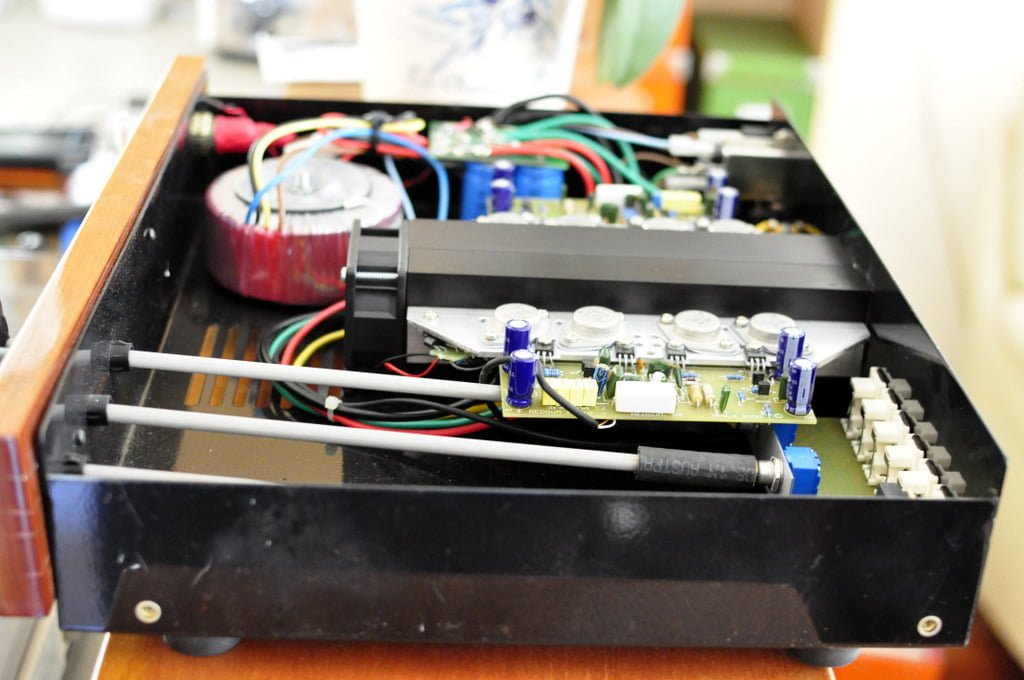
Features
I’ll run you through a few of the high-end features here. So first, there’s the price. I can’t find the original sell price of the ML-7 in AUD or USD, but it was 1.2 million Yen, a cool $12,000 AUD, THEN!!! The ML-7A, which followed in 1986 was a cool $4595 USD. That was a heck of a lot of money nearly 40 years ago friends. More on the ML-7A, in Stereophile.
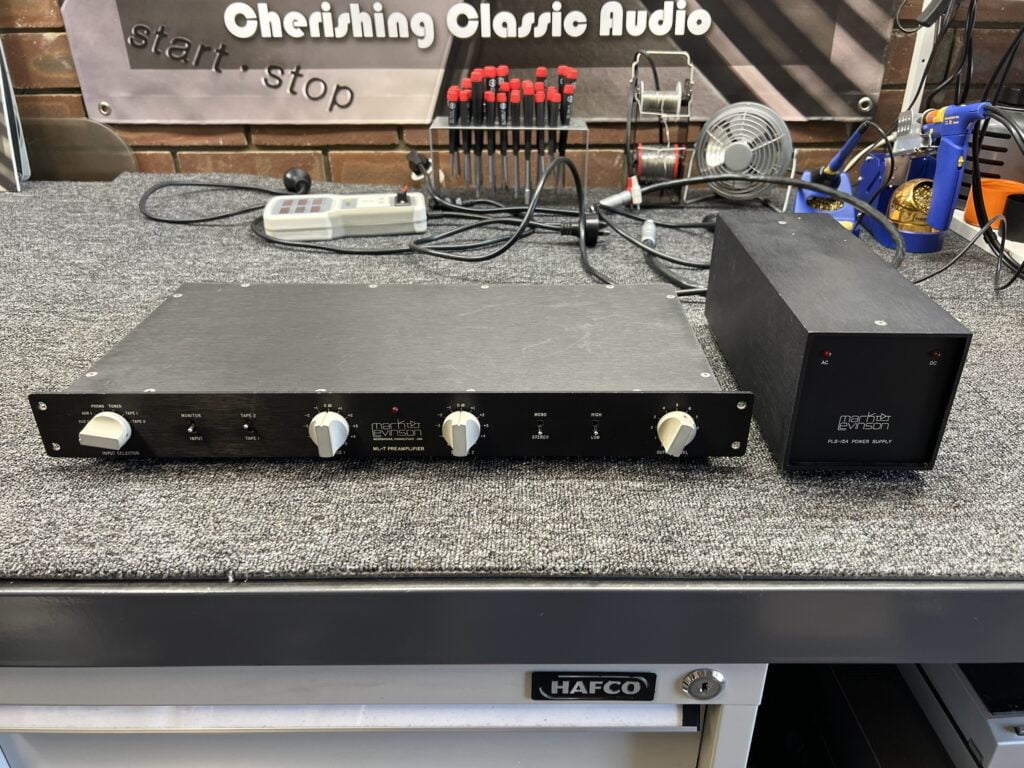
A somewhat comparable though slightly more recent preamp is the gorgeous Krell PAM-7 I’ve repaired and reviewed. I do prefer this era of Krell and for me, the Krell is better built, but Mark Levinson really evolved into a high-end icon and would go on t battle it out with Krell and others through the ’80s and ’90s.
Expensive Parts
Like other serious preamplifiers, gain and loading are adjustable, the latter being added by way of a Fischer plug on the back panel. The idea is that you make up a plug/s containing resistive and capacitive values to suit your cartridge.
This approach was common back in the day, but quite honestly, where four-pin Fischer plugs are involved, it’s a pain as they are expensive and hard to find. Speaking of connectors, Fischer also made the CAMAC connectors for the I/O on the Mark Levinson ML-7.
Mark Levinson used these connectors because they understood the significant limitations of RCA and DIN connectors. They are superb Swiss-made connectors featuring Teflon, gold, superb performance and very high build quality. Honestly, they make RCA connectors look as puny as they truly are.
The Fischer-branded connectors are eye-wateringly expensive but LEMO, another high-end connector manufacturer also makes them and they are more affordable and readily available. In truth though, as crappy as RCA connectors are, the use of CAMAC plugs and connectors is an inconvenience for most, despite the fact that they contribute to the high performance of equipment like this.
Then there are the parts – mil-spec capacitors and resistors, super expensive switches and potentiometers, tons of my favourite ERO and WIMA film capacitors – no cheap Chinese parts dressed up as high-end here. Of course, there’s also an outboard power supply, one of the best things to help make a really quiet preamplifier.
Think ALPS Blue Velvet potentiometers are fancy? The Mark Levinson ML-7 uses a Penny and Giles volume potentiometer (from memory) that would set you back hundreds of dollars, just for one! This is where your money goes with really good gear – many dollars per connector vs cents, hundreds per volume control even in bulk, vs cents to a few bucks. You’ll see it quickly adds up.
Mark Levinson ML-7 Specifications
Courtesy Audio Database, adapted by Liquid Mike
| Type | Preamplifier |
| Configuration | Phono amplifier 2 / line amplifier 2 Four plug-in configurations |
| Gain | Phono Amplifier: 38dB/44dB (Switching) Line amplifier: 20dB |
| Input impedance | Phono Amplifier: 50kΩ / 820Ω (Switching) Line amplifier: 13.5kΩ or more |
| Output impedance | Phono amplifier (Tape out): 1.2kΩ Line amplifier (main out): 47Ω |
| Maximum output voltage | Phono Amplifier: 6.6 V Line amplifier: 8.0 V |
| Power | 100/120/220/240 VAC, 50Hz/60Hz |
| Power consumption | Approx. 25W |
| External dimensions | Preamp: Width 483 x Height 51 x Depth 216 mm Power Supply: W 101 x H 101 x D 269 mm |
| Weight | Preamp: 3.6 kg Power Supply: 2.4 kg |
Problems
The owner of this beautiful Mark Levinson ML-7, from Busselton in WA’s southwest, sent me his preamp because it died. Specifically, it looked like a failure of the outboard power supply, the PLS-154. The LED indicators gave some clues: AC voltages were present, but none of the DC voltages necessary to run the ML-7 itself.
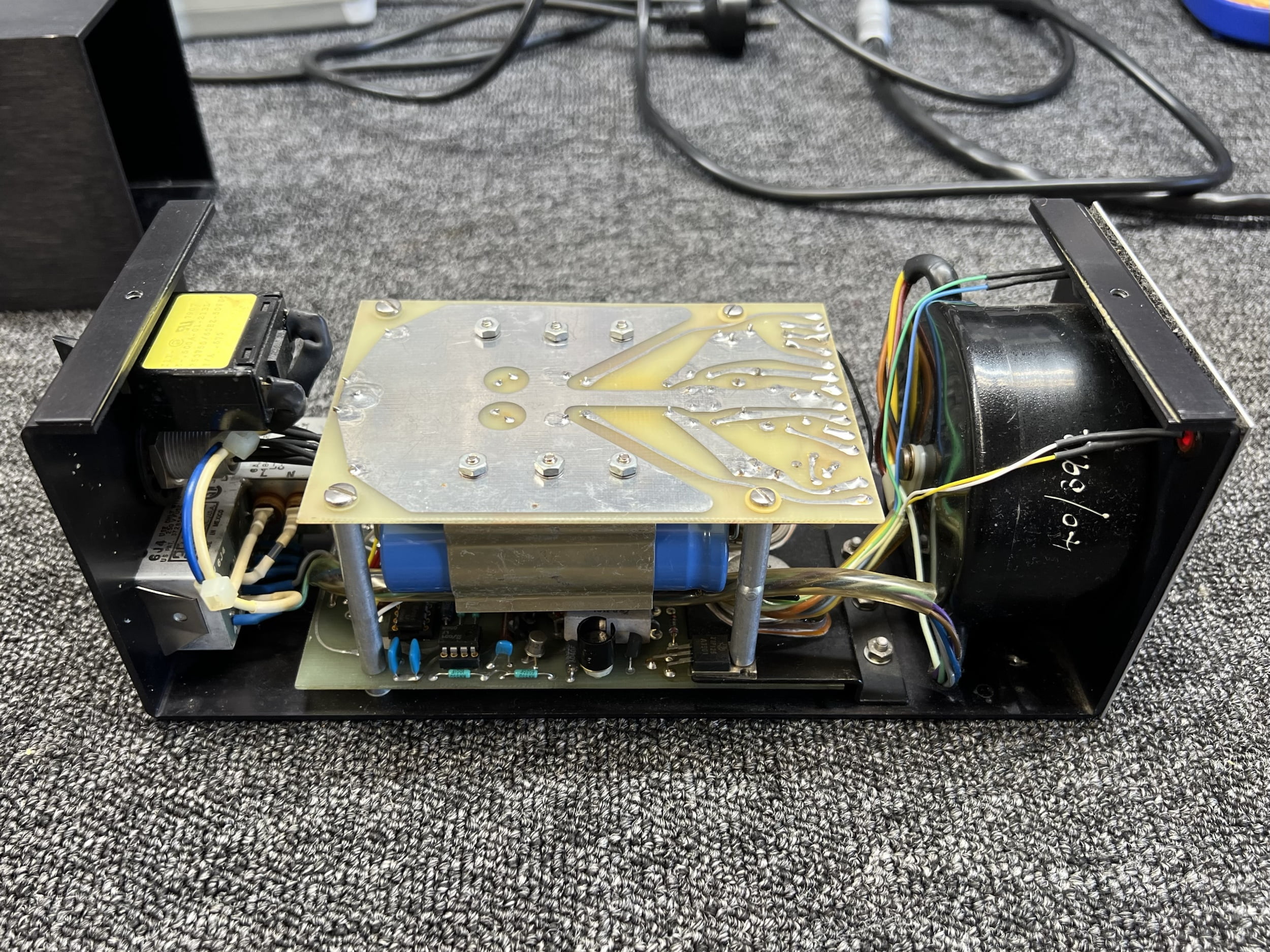
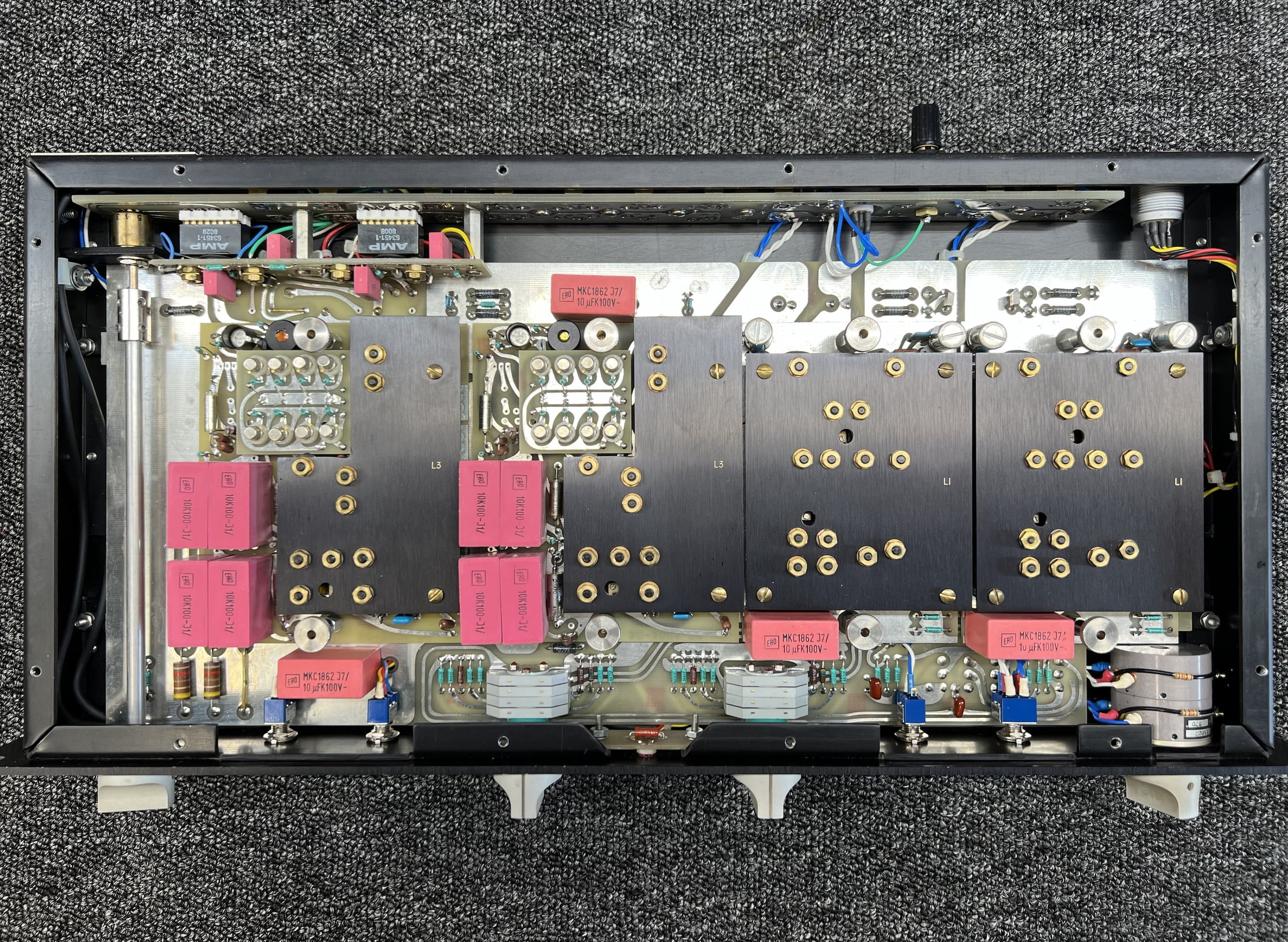
This unit was originally purchased from Vince Ross Hi-Fi, a classic retailer back in the day, and failed at some point, decades ago. The technician they used was a guy called Klaus and I’m sorry to say that he did some pretty bad work. Some of it is featured in the Hall of Shame, check out cases 7 and 8 for a better idea.
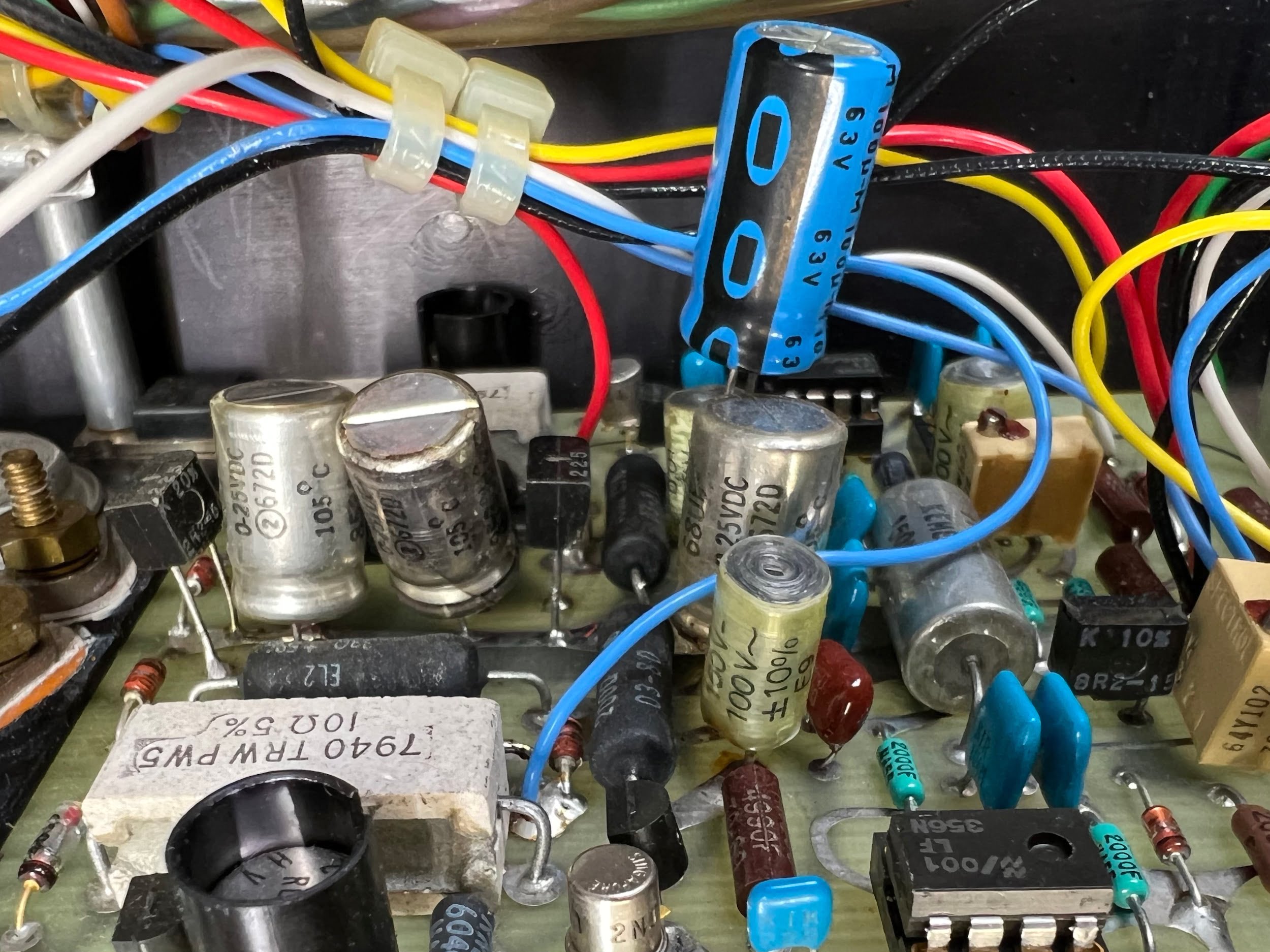
This preamp had been worked on by Klaus and the usual hallmarks were evident: tacked-on capacitors, burned parts, damaged pads and, perhaps most tellingly, the unit had been set to run on 220V. Why anyone would do or not check this is beyond me. We don’t have a 220V mains supply here in Australia. This small yet significant oversight no doubt contributed to the failure of the PLS-154 power supply, more on that later.
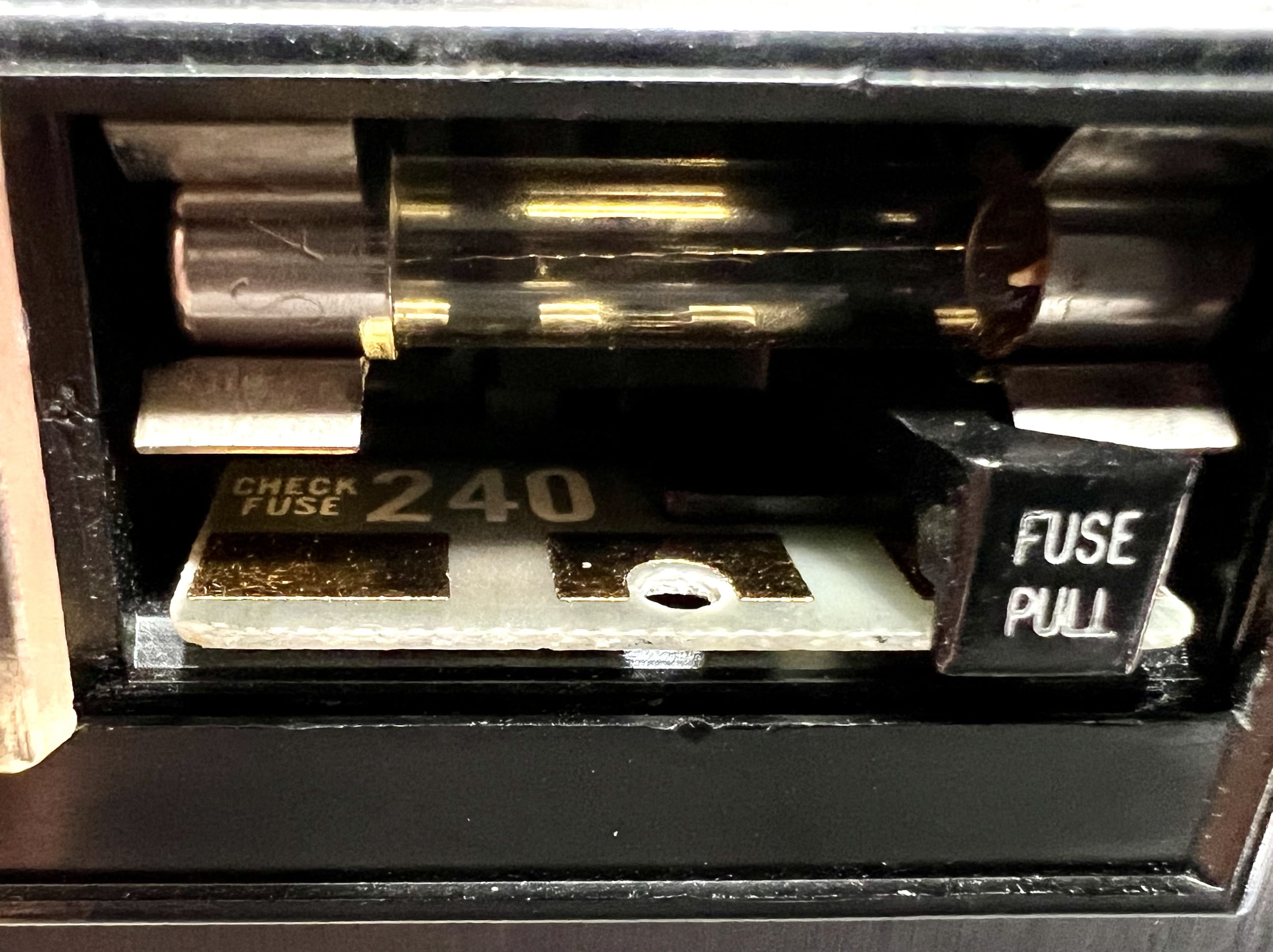
Repairs
My focus was to fix the power supply first, and then find out if any faults remained. This was harder than expected, because of the damage inflicted previously and because there is no service documentation available, at least none that I could find.
I started by disassembling the power supply to gain access to both sides of the two boards. I could immediately see problems and set about resolving those first, replacing all the dead wet electrolytic capacitors, fixing board damage, checking various semiconductors and cleaning boards.
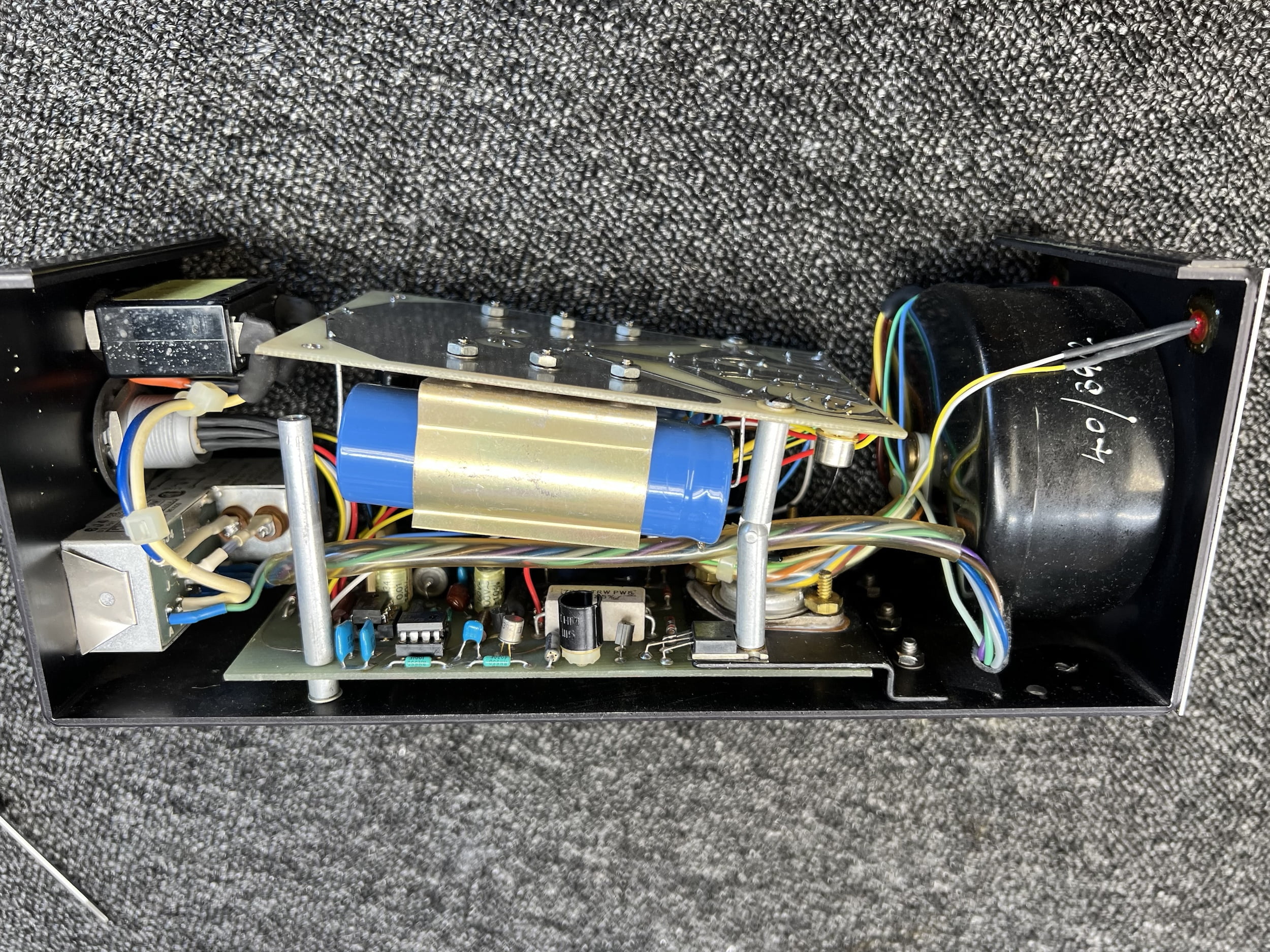
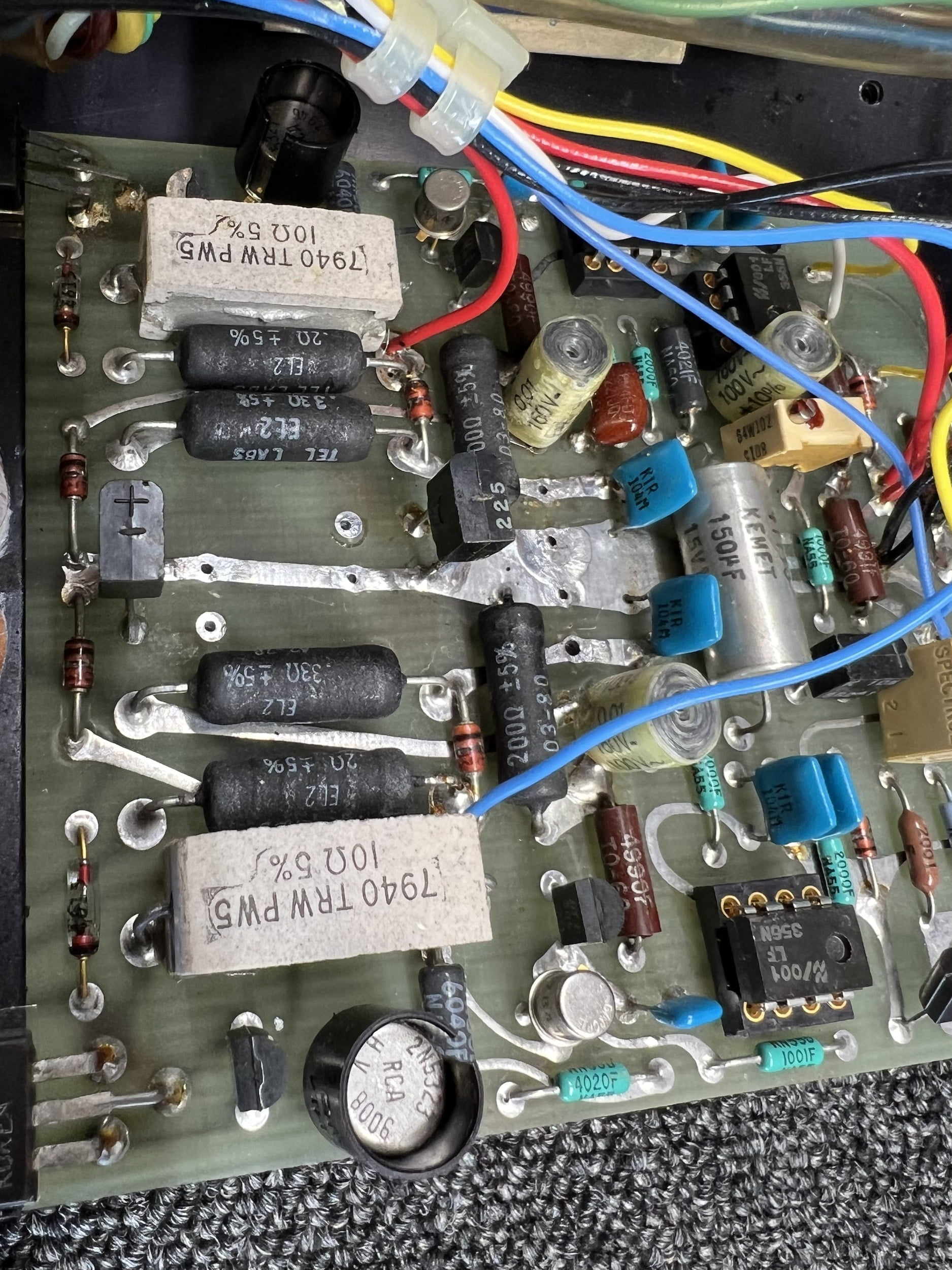
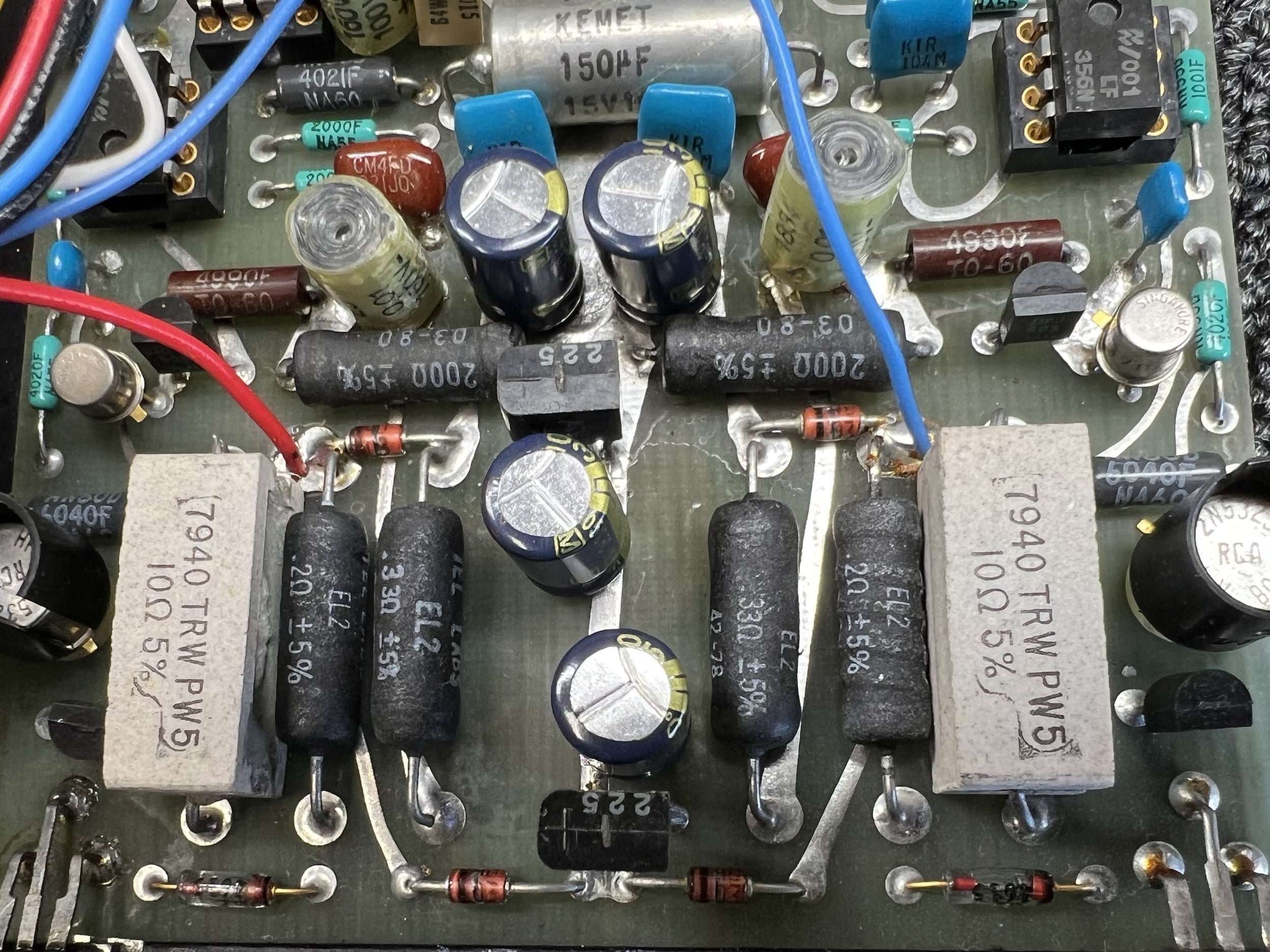
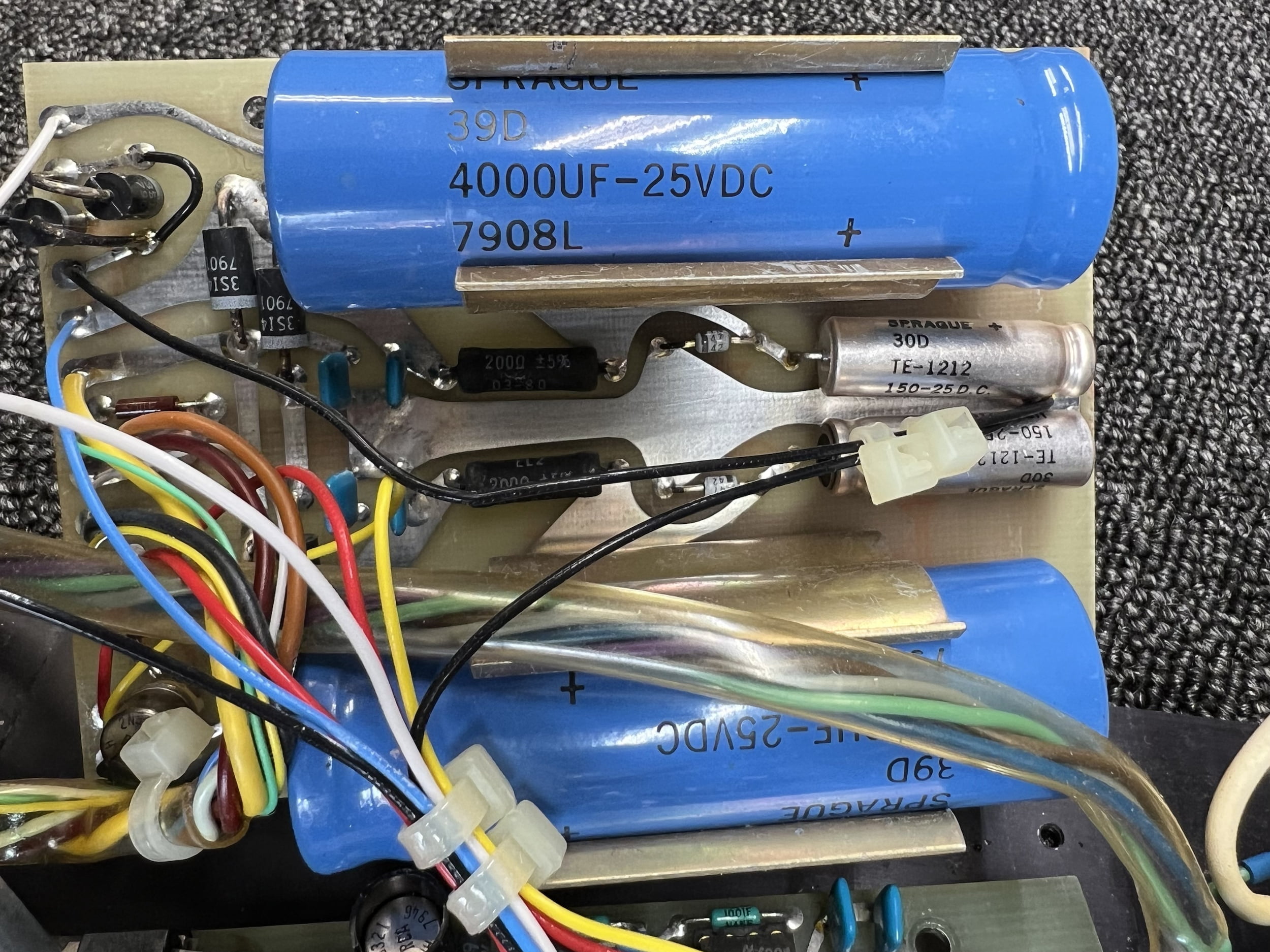
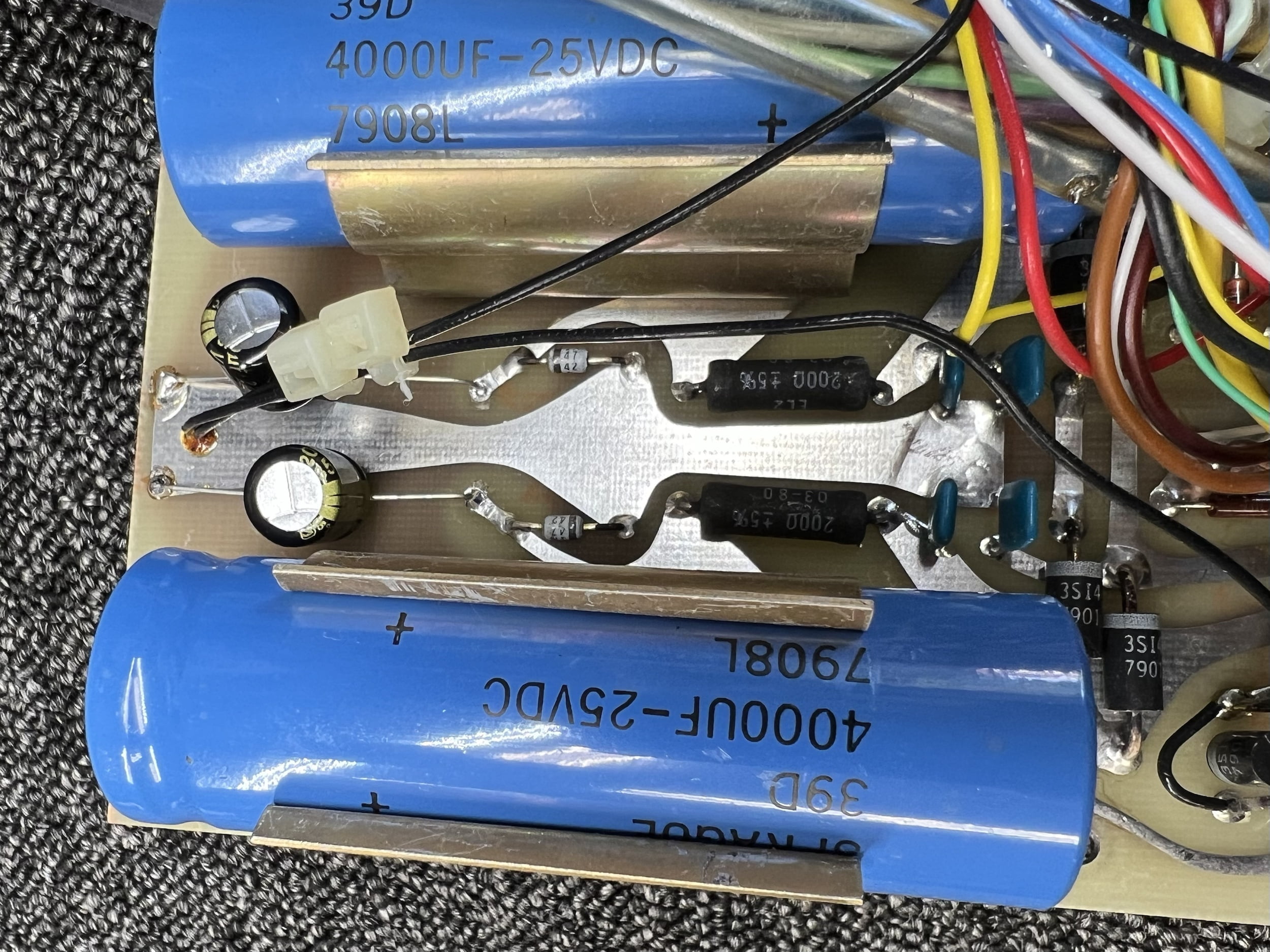
I put her back together for a test. Still no DC, so I started measuring voltages, checking diodes, and looking for voltages where I knew they should be. I saw rectified and filtered DC rails which meant that the basic power supply was good. The issue seemed to be one of regulation, or lack of it. The bottom board does that stuff, so back apart it came.
After various other tests, verification, and tracing, I checked voltages around the three op-amps. That’s when I found a socket installed backwards which threw me. The chip was in the right way but there were a few erroneous voltages on one of the op-amps. That’s a bingo!

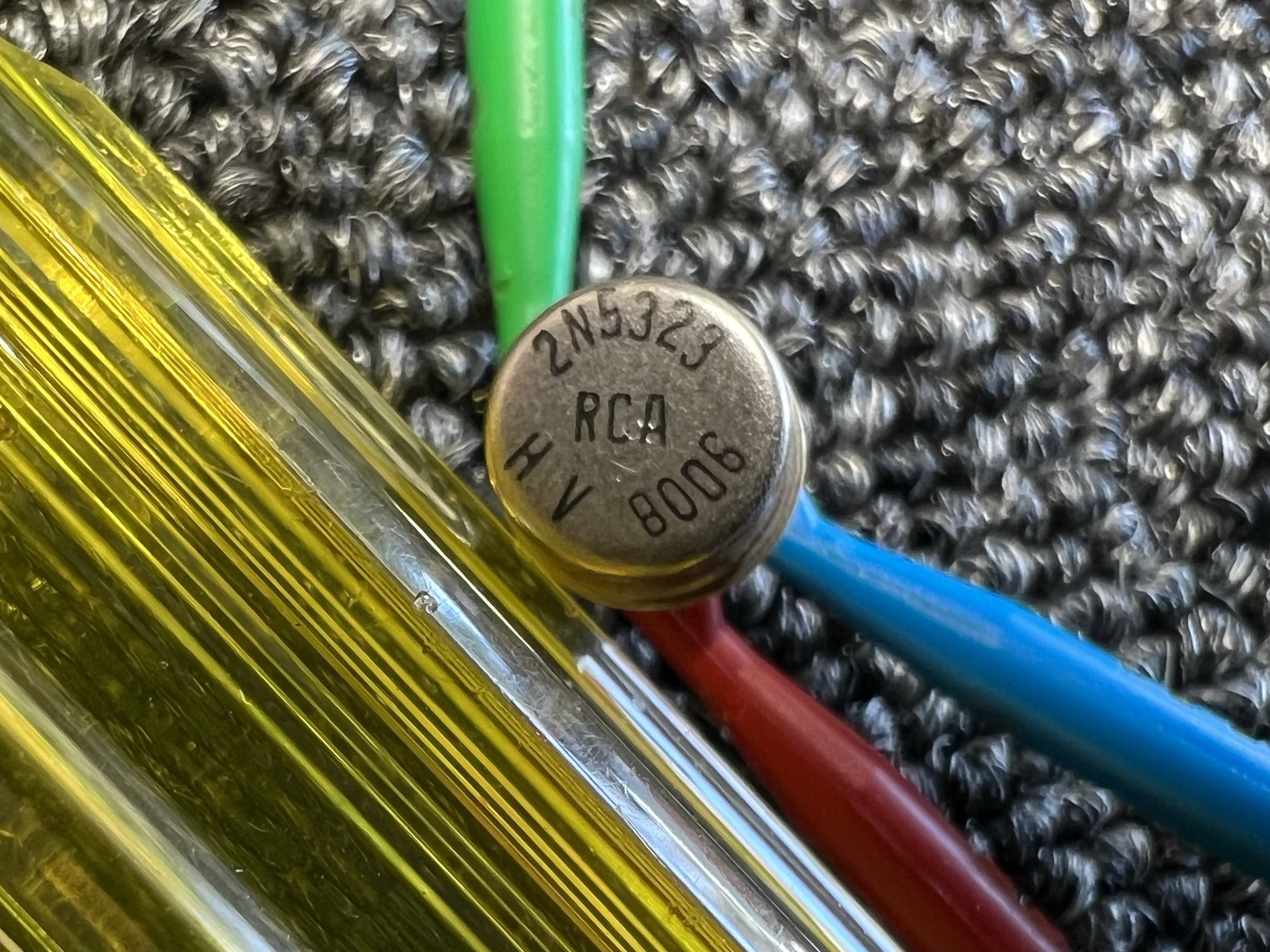
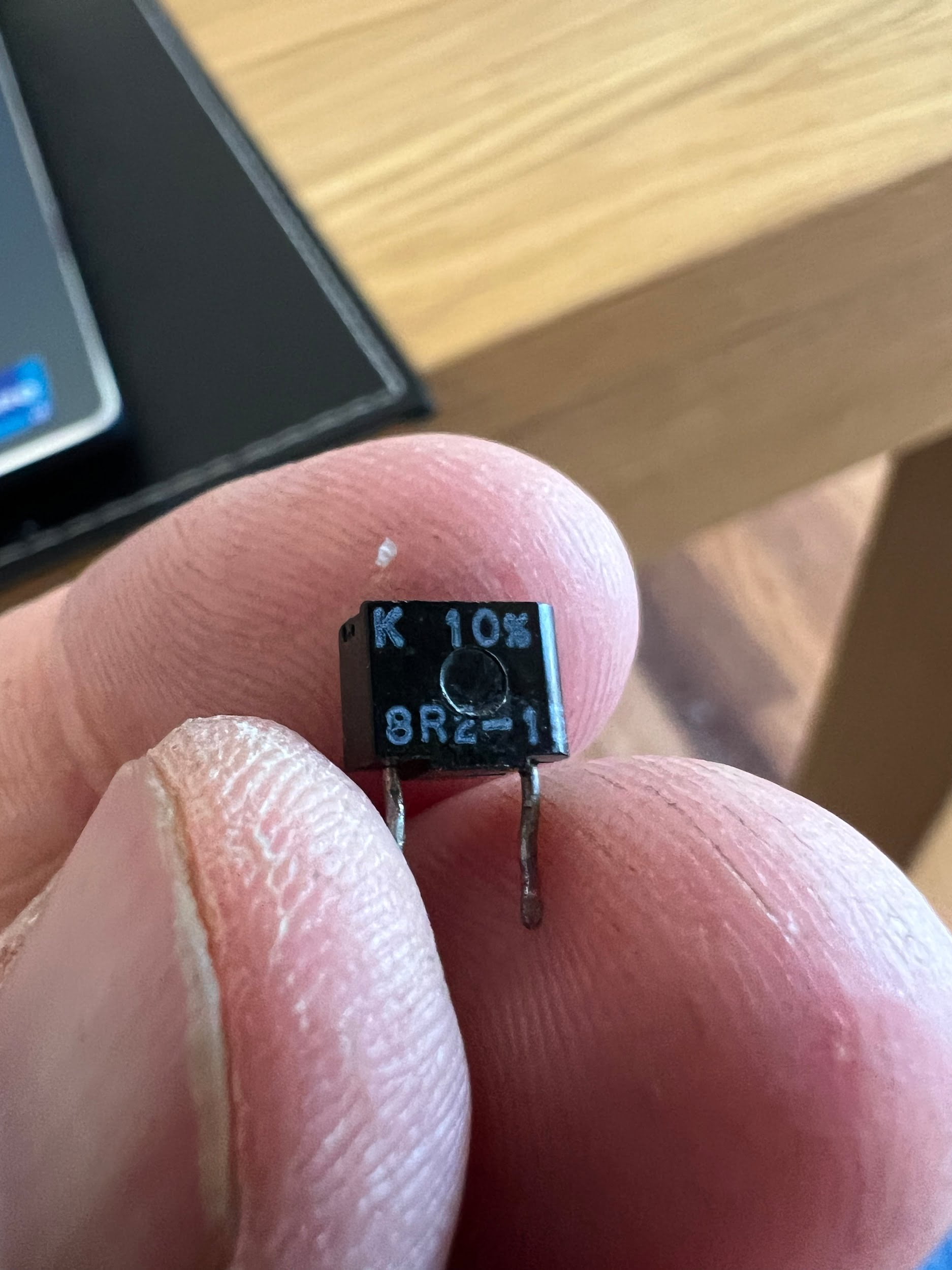
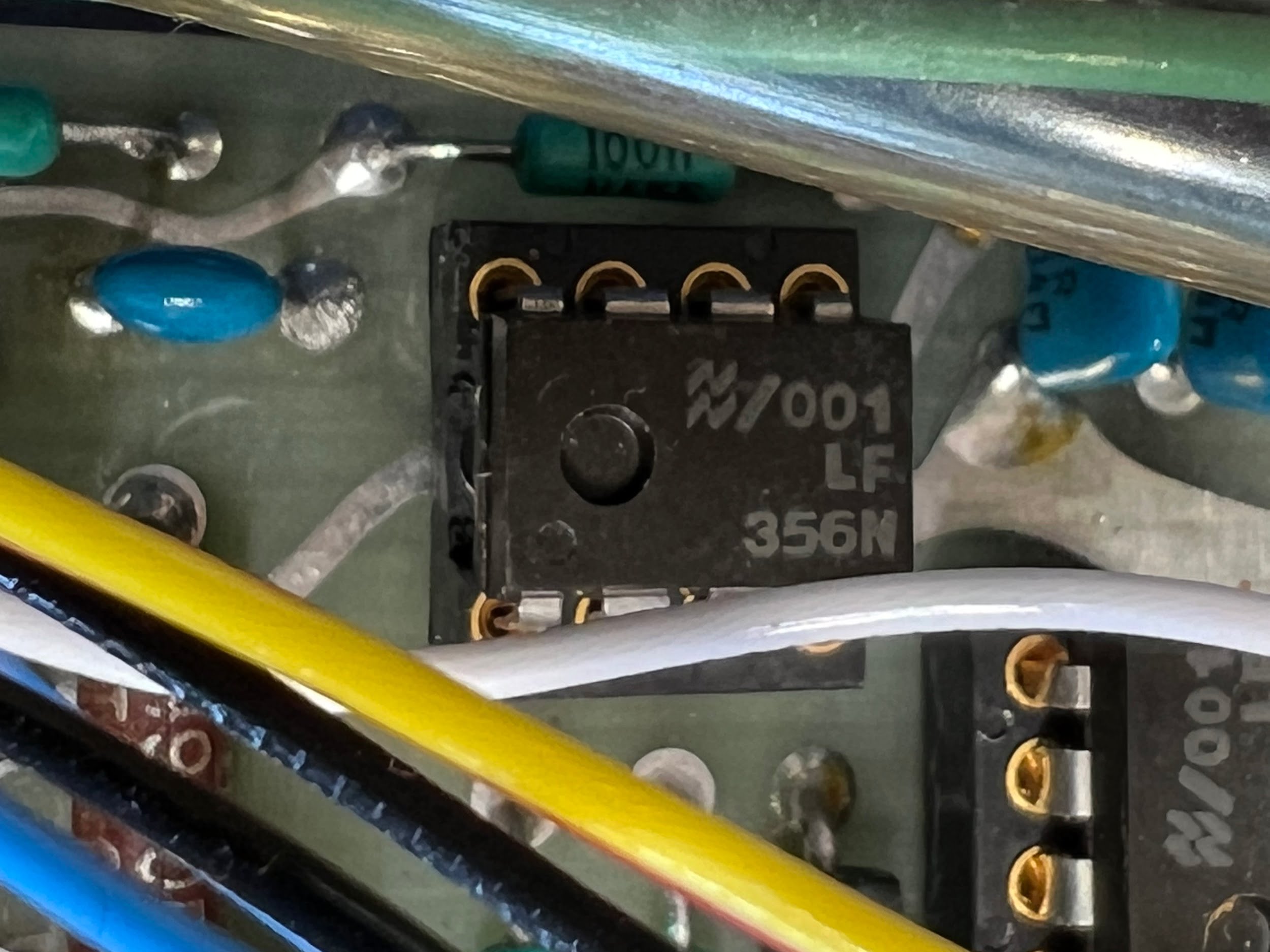
Thankfully the op-amps are socketed, so I was able to replace these, from stock, and without pulling the whole darn thing apart again. After replacing the op-amps with modern FET-input substitutes, the PLS-154 sprang back to life. We have DC voltages!
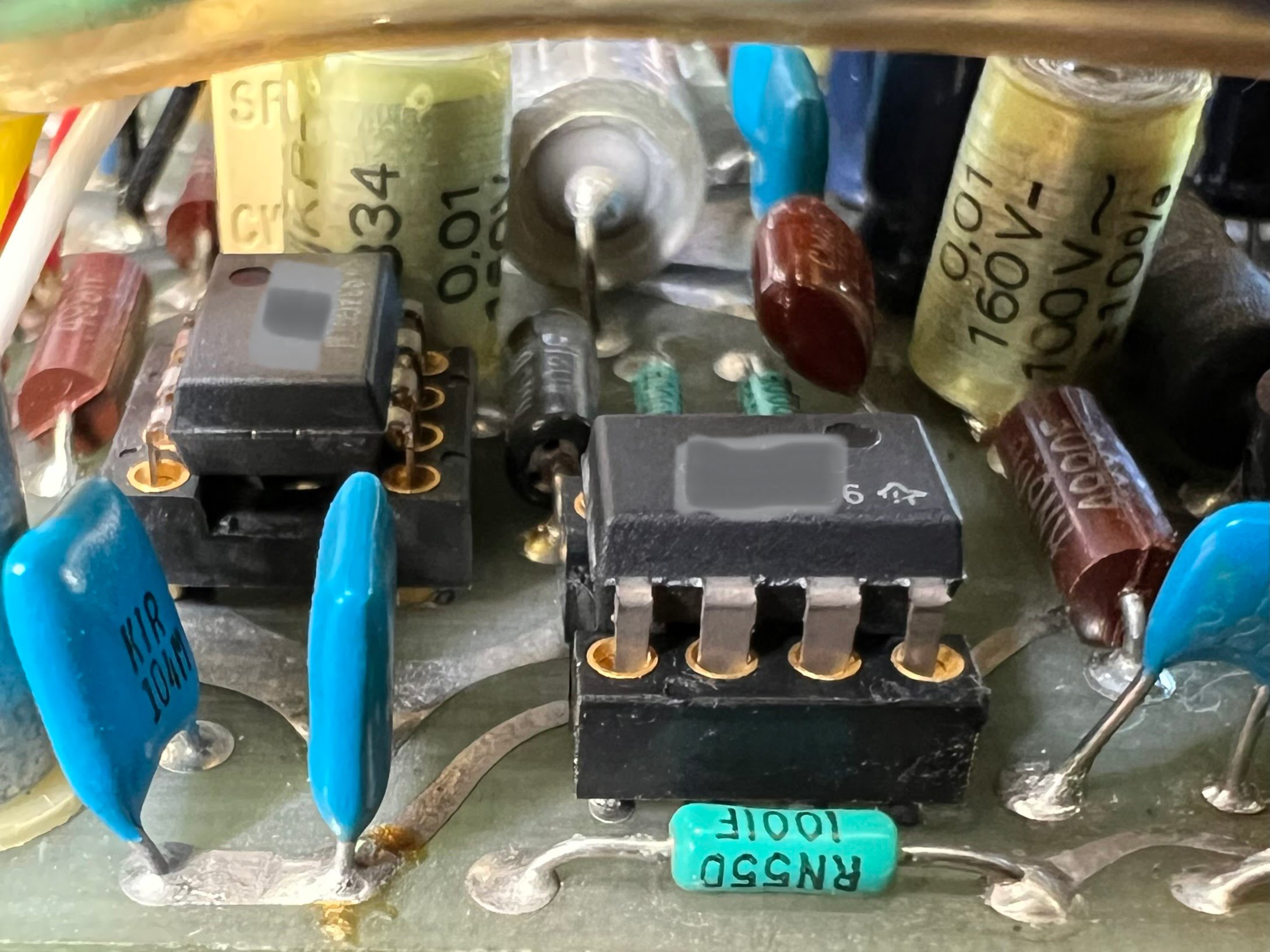
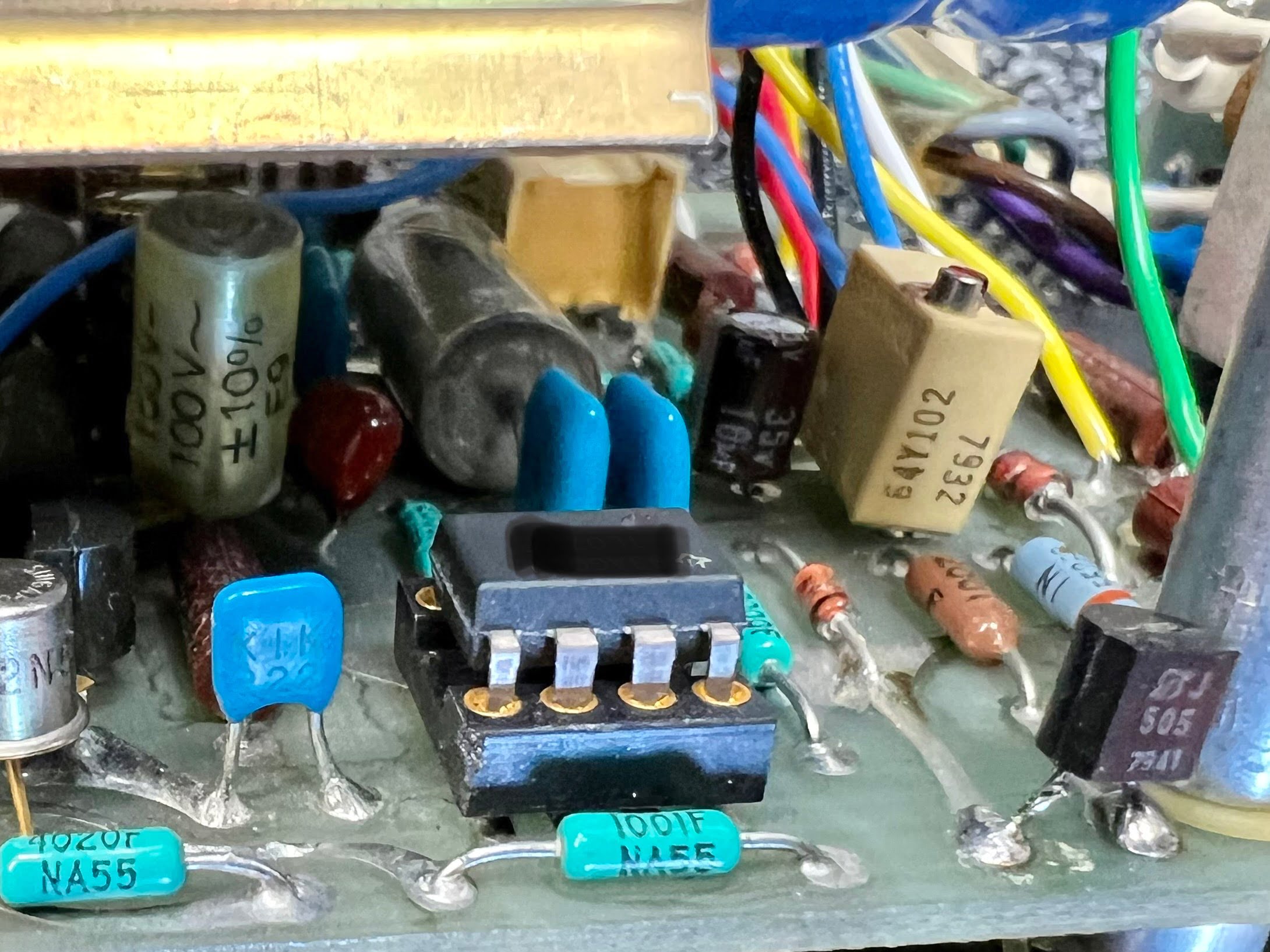
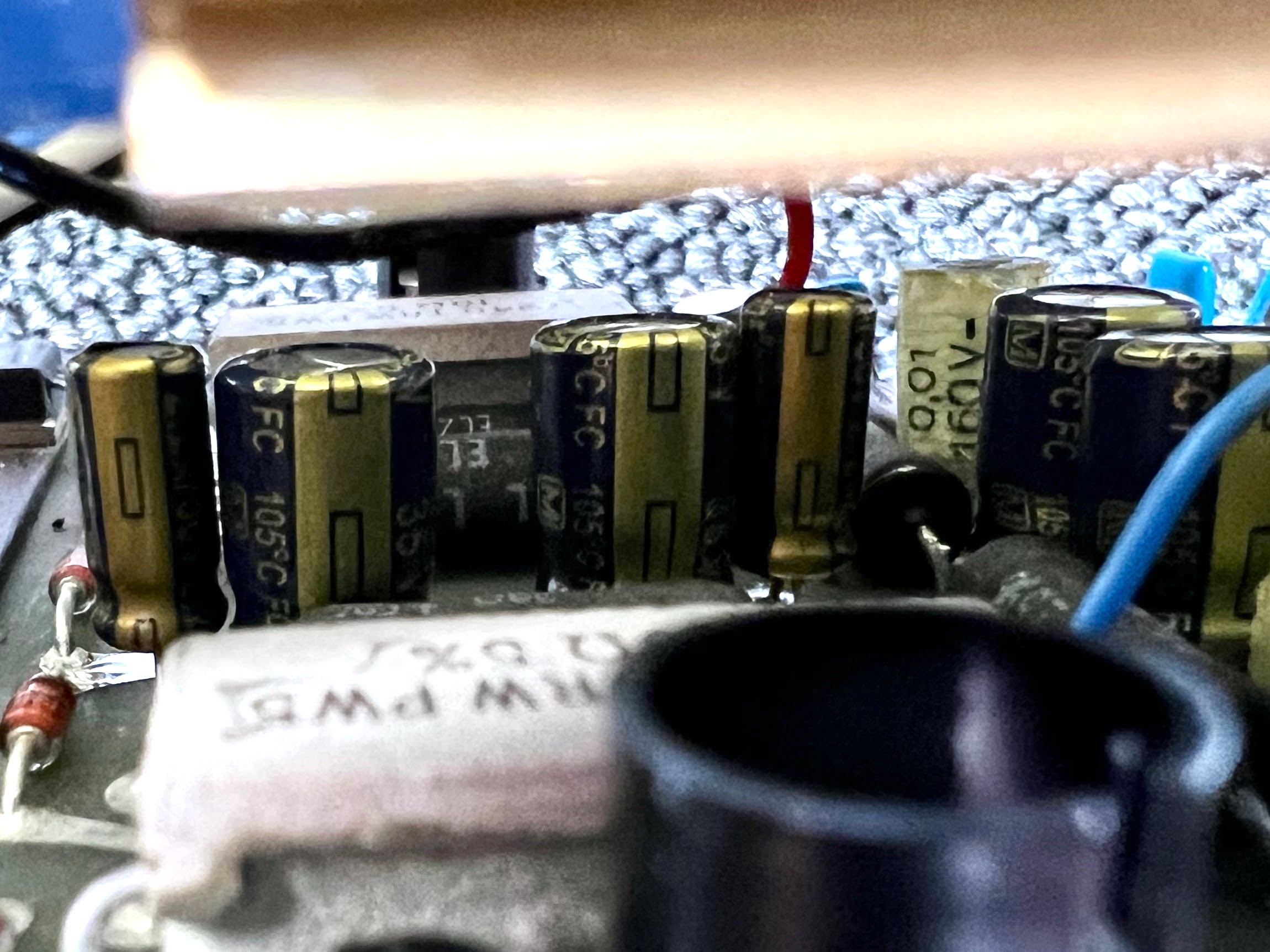
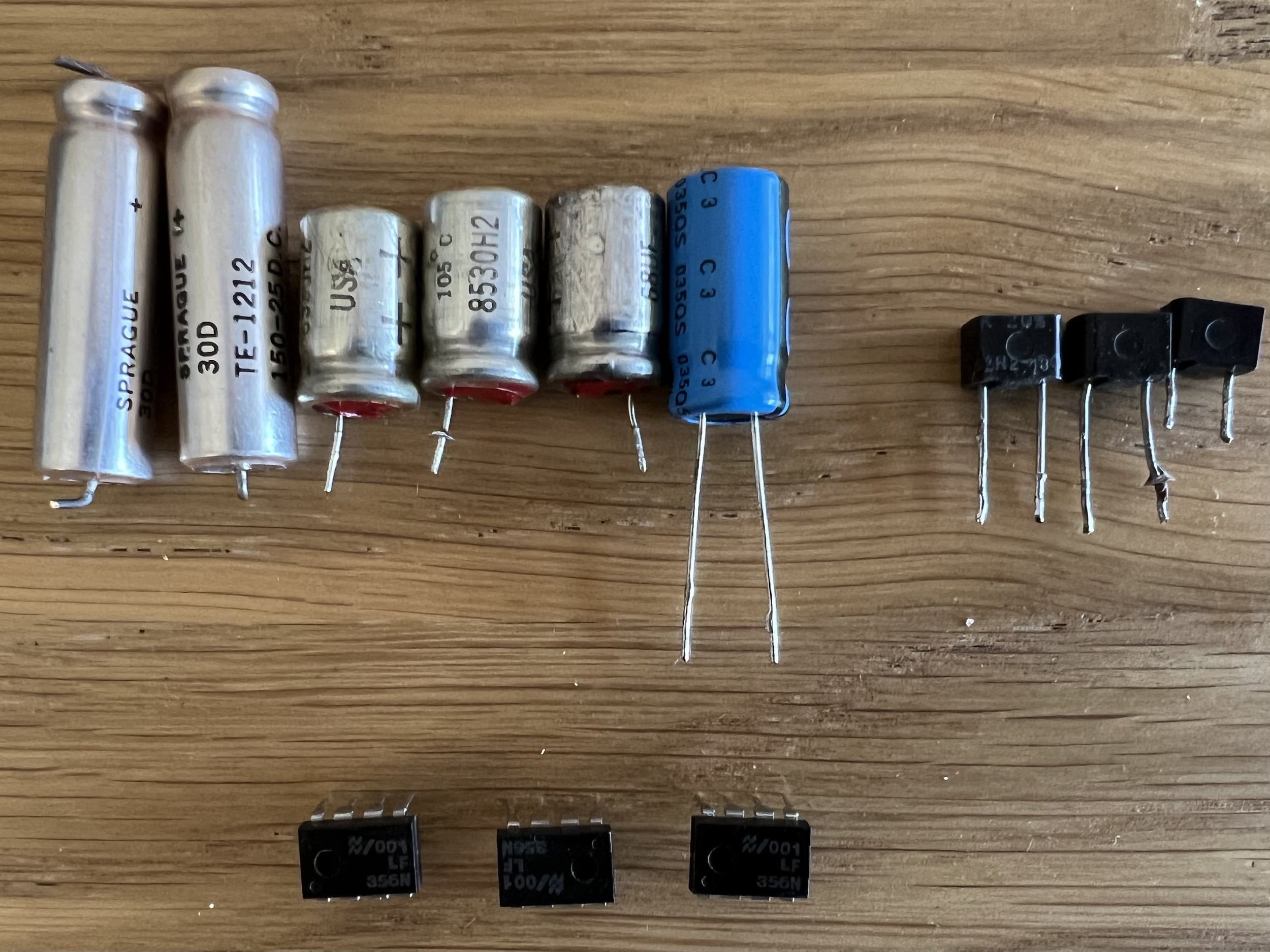
The rest of the repair was pretty straightforward. I serviced the actual ML-7 preamp, check and cleaned a few things and then hooked everything up with CAMAC to RCA connectors, courtesy of the owner.
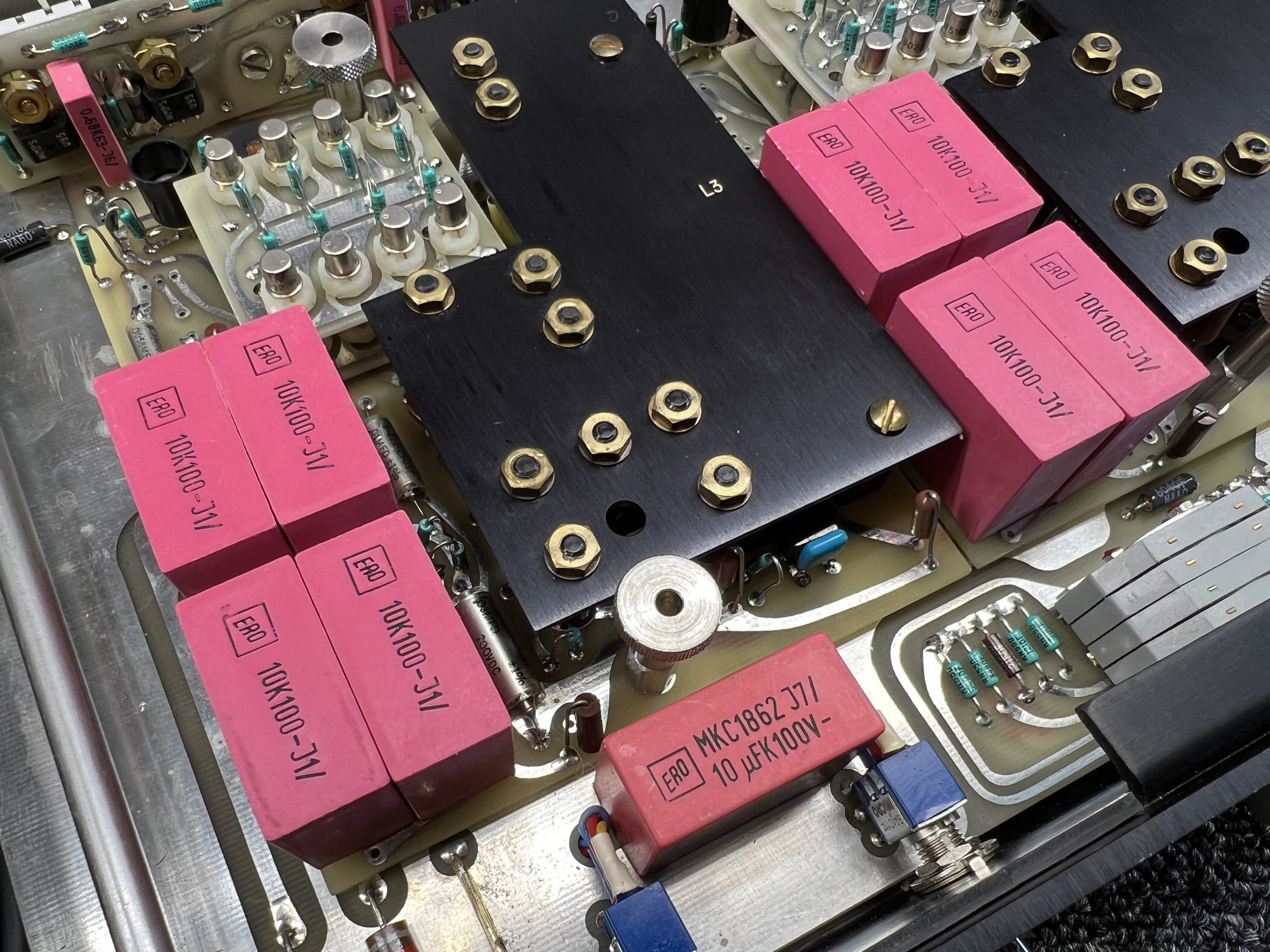
Results
I’m pleased to say that she ran beautifully after I figured out what was wrong here and resolved the problems. The was all about the power supply, and with that sorted she sprang right back into life and ran perfectly.
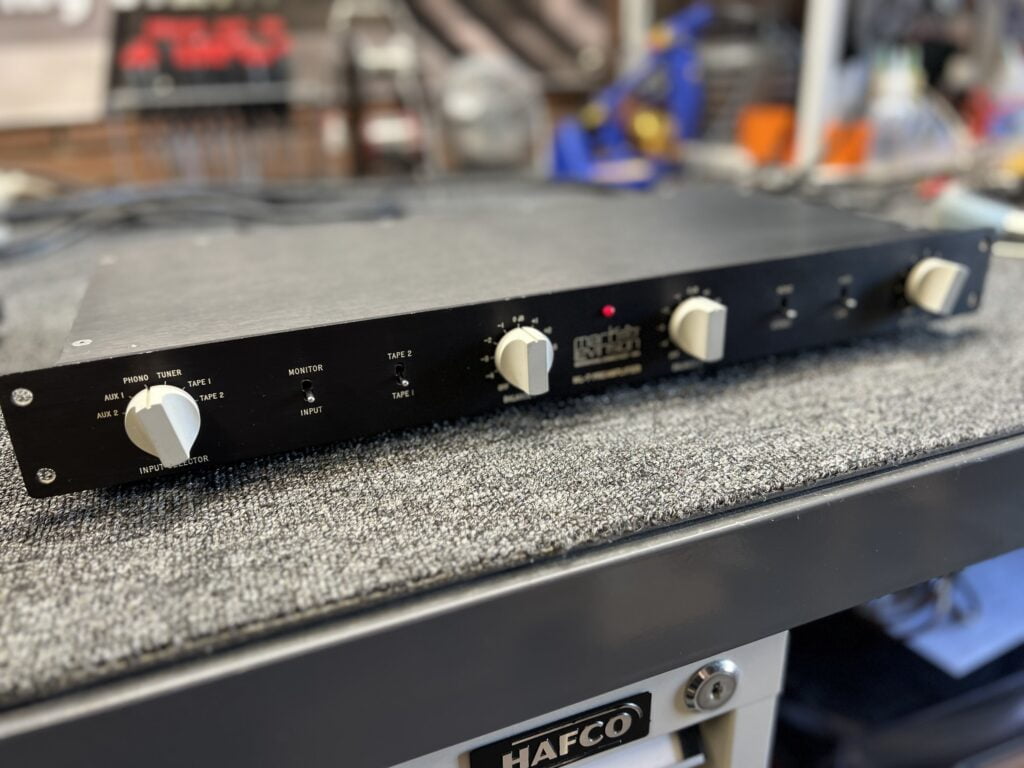
I listened to her briefly through headphones and my test setup and she sounded wonderful, even at 40+ years of age. You would expect a premium product to sound good of course, but something like this Mark Levinson ML-7 delivers a crushing blow to fancy op-amp based preamps that reviewers rave about these days. This really is in another league.
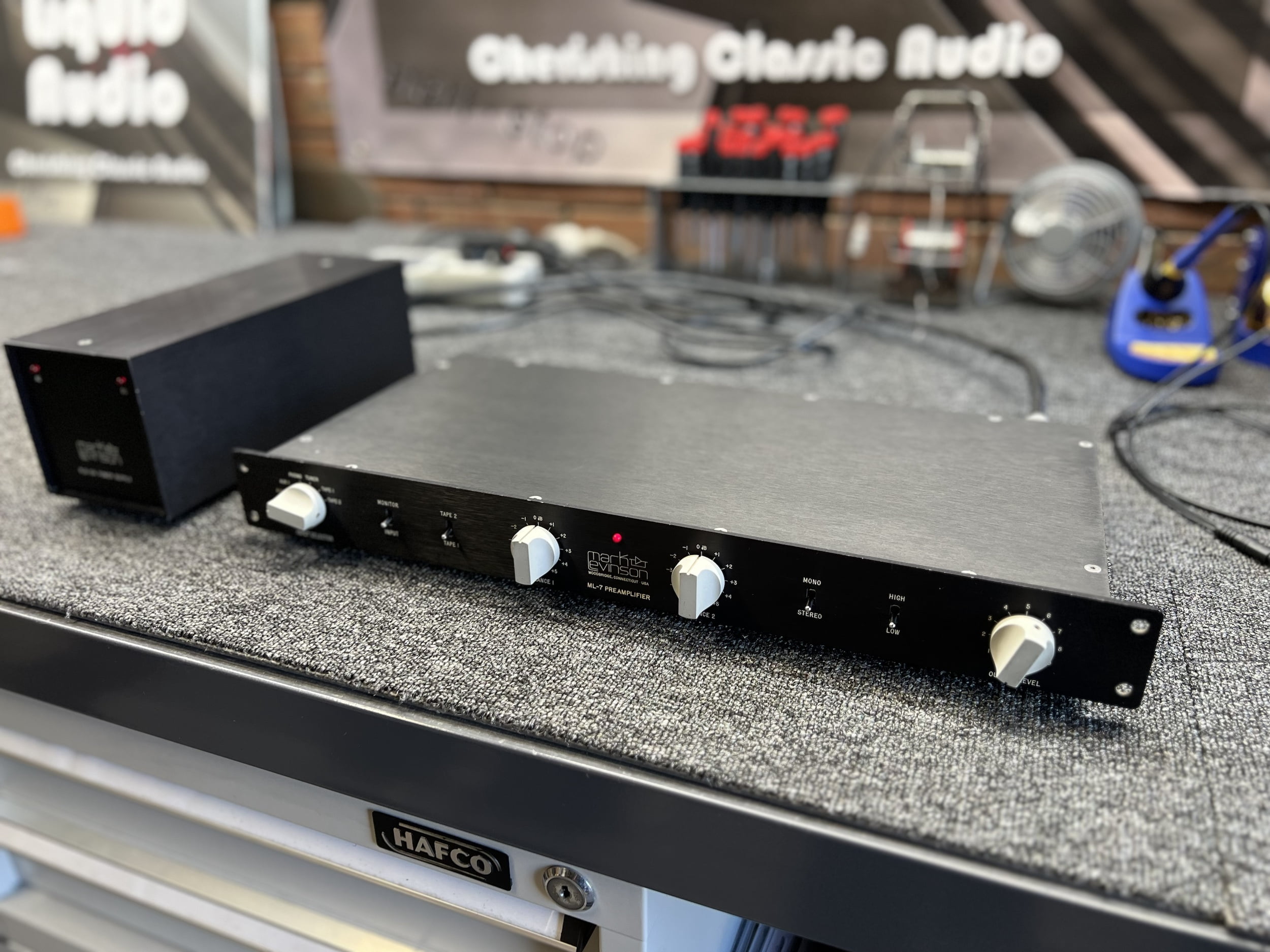
I explained to the owner that the ML-7 preamp itself is due for an overhaul at this age, but his plan is to sell this old girl, so if you want one of the most sought-after and revered vintage preamplifiers from back in the day, this could be a great opportunity! Get in touch with me if you do and I’ll put you in touch with the owner.
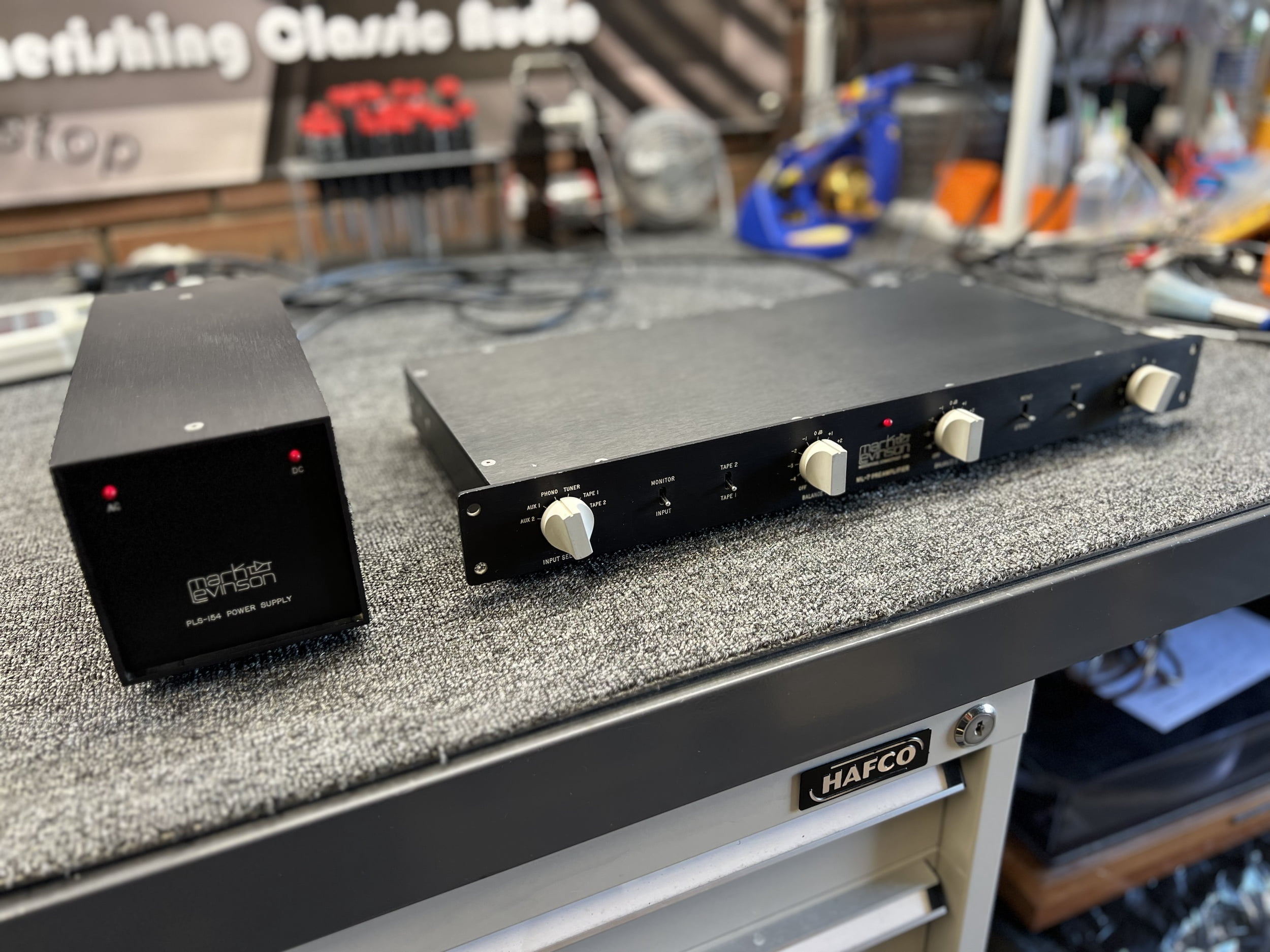
Anyway, the owner of this Marl Levinson ML-7 is very happy with the dramatically improved performance.
UPDATE: Actually Graeme, the owner, is so happy with her now that he changed his mind and is keeping her:
Hi Mike
I have the (pre)amp up and running extremely well. One big improvement is the PS that had some audible hum, but (it is) now completely silent.
I read with great Interest your evaluation … but more so the description of the work you carried out. Certainly worth the money I invested in it.
Finally, many thanks for the great repair you did for me.
Graeme
My absolute pleasure Graeme.

It’s worth considering the prices these preamps go for these days, now that people have cottoned on to how good they are. I’ve seen prices of 5,500 Euro recently, that’s over $8000 AUD!! Sweet lord, that’s getting up there, but then when you look at what you can get new in terms of really good preamps, it makes a little more sense.
Support
As always, thank you for visiting and for your ongoing support. I hope you enjoyed this article on another rare and unusual piece of hi-fi history. It helps me a lot when people like, share and subscribe, and you can buy me a drink, or make a donation to help support the production of more content like this… Or bring me your hi-fi gear to repair!
If you have a Mark Levinson ML-7 or any other lovely Mark Levinson gear in need of a little freshen-up or a repair, don’t hesitate to let me know!
Discover more from LiQUiD AUDiO
Subscribe to get the latest posts sent to your email.

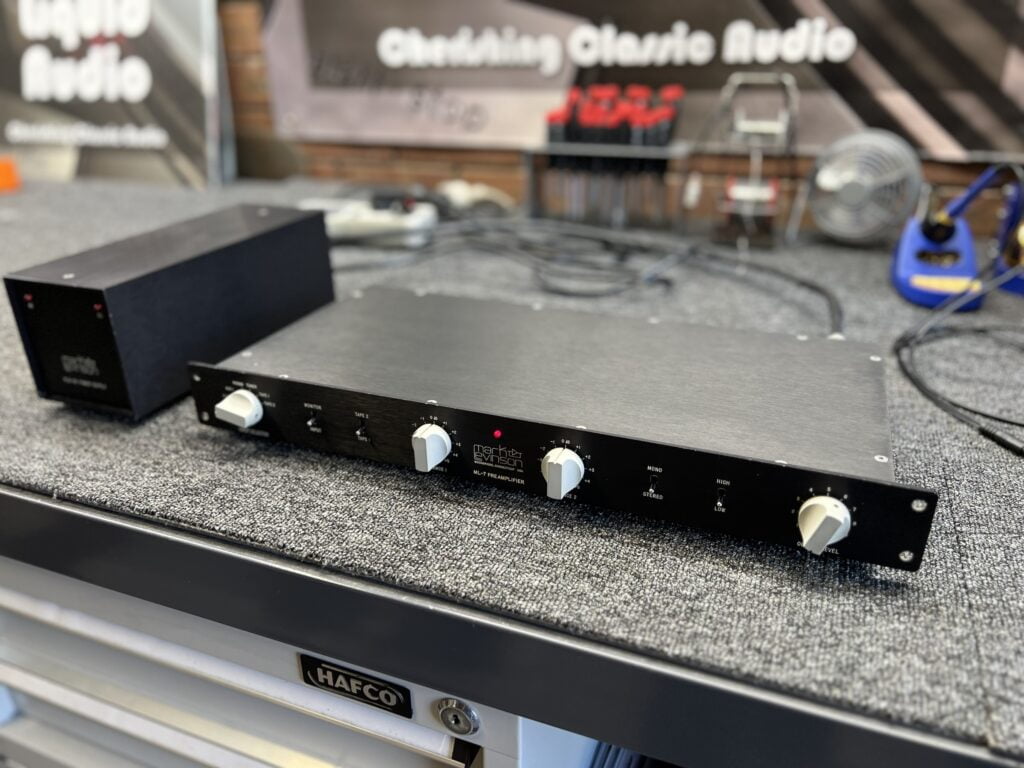
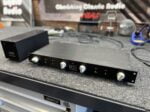
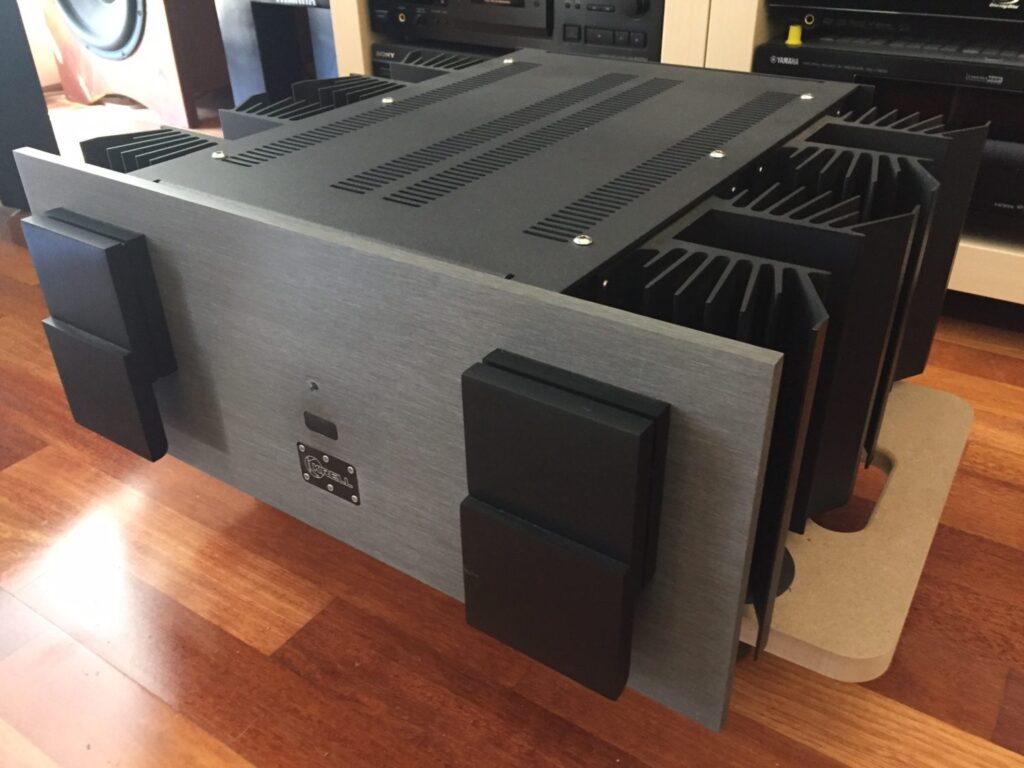
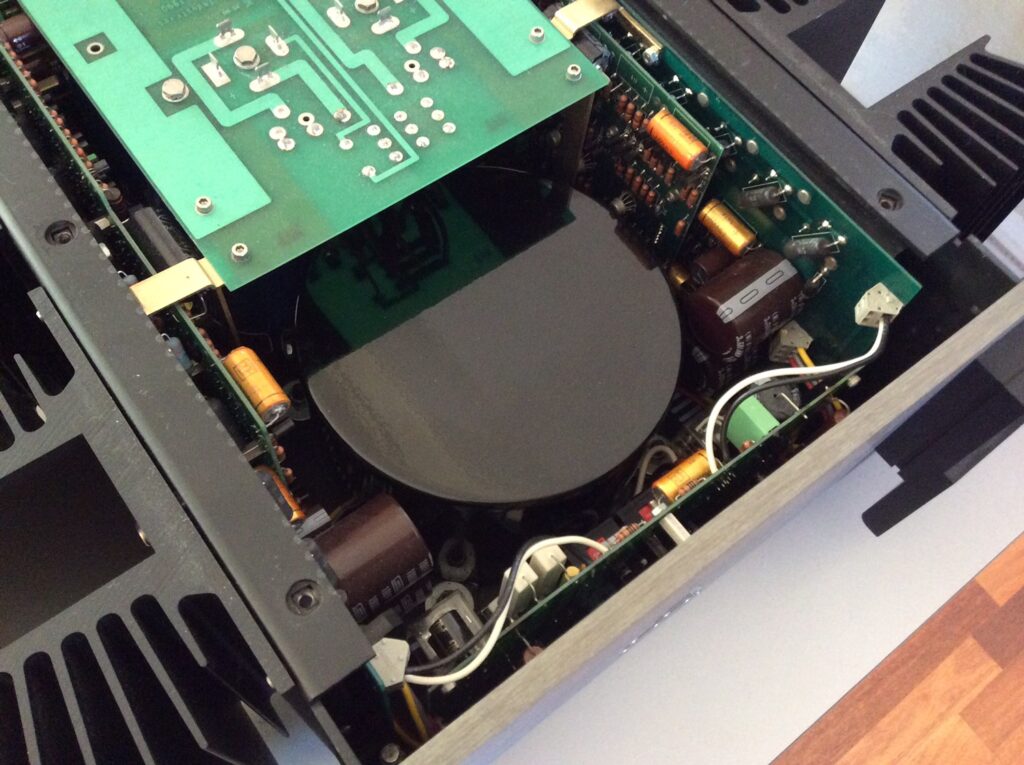

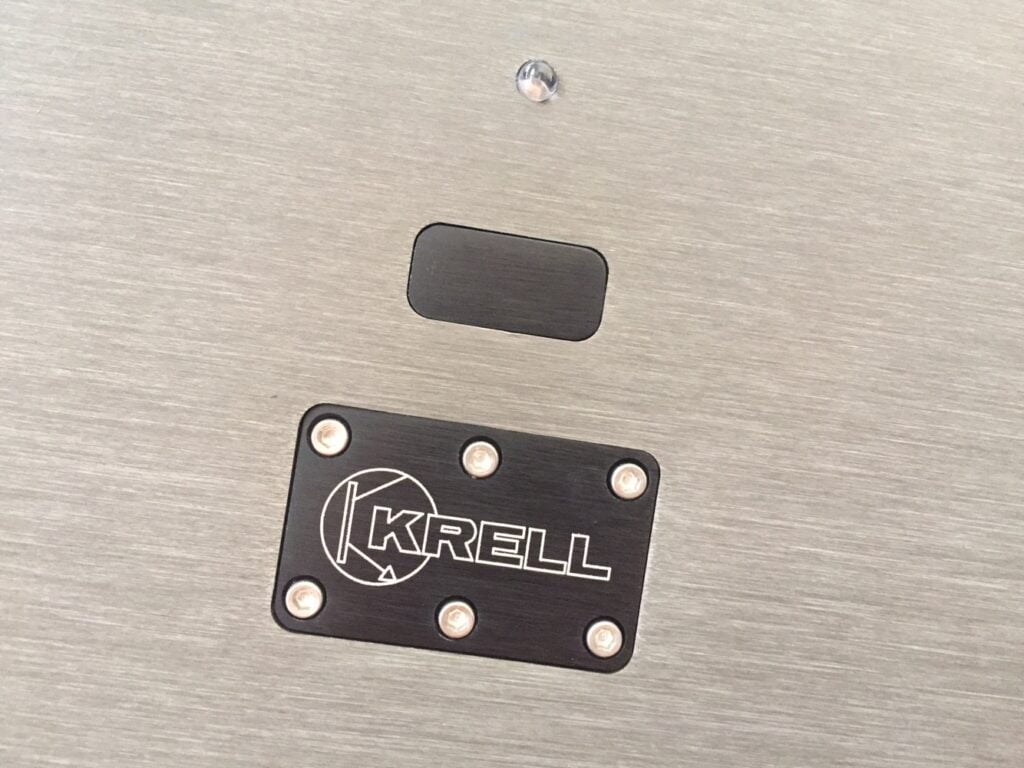
Hey Mike,
Thanks for the article, curious to know who designed this piece? Was it John Curl?
🙂
Hi Frank, I don’t believe so, I thought it was the man himself, Mark Levinson, but I don’t know this. John Curl was at some stage associated with ML so it’s possible he was involved. He designed the JC-2 which was a precursor, so there may be some of that DNA in the ML-7.
The designer of the ML-7 is the late Tom Colangelo (MLAS, Cello and Viola Labs)
Another great read. Your write-ups read like a spy novel, full of excitement and energy!!
Glad you enjoyed it John and thank you!
I feel sad reading these articles. We really have gone down the toilet in manufacturing when it comes to “high end audio”. Most of the super duper brands from Europe don’t use parts like this despite being priced like luxury cars. If I was a young fellow getting into high end audio now, I’d go to tafe and learn electronics and build my own analog gear. Alas for an old cogger like me it’s too late. What a wonderful rescue of this superb Mark Levinson pre. Looking at the current flagship Mark Levinson preamp, they claim they use military spec components. Pictures are there for all to see. Can someone enlighten me if these tiny itsy bitsy surface mount caps and resistors are reliable long term compared to through hole components ? I was of the impression all these tiny surface mount components are made in China, whose quality control is dubious . But maybe the military and aerospace industries get surface mount components from another country , don’t know. Splendid engaging write up from Mark as usual
Hi William, thank you for sharing your thoughts and I agree, things have gone downhill in many ways, in terms of electronic equipment construction. I haven’t seen a recent piece of Levinson gear, but I know they are not made like they used to be. Typically, SMD caps don’t last as long as through-hole components for a variety of reasons, mostly relating to size and proximity to the PCB, and lead-free solder processes are definitely not as reliable long term. That’s why most of us doing this sort of work still use Pb-based solder!
Another great article, Mike. If the pre-amp was good and well built, I would guess that it was not designed by Levinson himself. Levinson was trying to build an amp that was comparable to the extraordinary Stax amplifiers (which were and still remain in a different league to Levinson’s own work (which was rubbish). Levinson himself just went from one failure to the next. First under his own name, then Cello, then Red Rose, etc. When Krell turned up, the first Krell was twice the power of Levinson’s overrated (and only because it was not Japanese) ML-2A, better built and cheaper. Still, as always, your articles make for refreshing and honest reading.
Thank you Marius, glad you enjoyed it and I appreciate your thoughts on this one. Stax gear from this era is certainly a high point in terms of everything really. You’ve inspired me to write up a Stax CA-X preamp I worked on a few years back, readers will scarcely believe the quality. I have a great fondness for the early Krell gear, it’s probably my favourite to work on, but you likely already know that!
Hi, for all you guys who is interesting about Mark Levinson history . The technical engineer of this unit and for all Ml stuff to 1985 was Tom Colanngelo 1949-2007 . models ML-1 through ML-12—many of them co-designed with Paul Jayson.
Thanks for the additional info Rafal, much appreciated.
The volume pot is a wirewound Spectral Series 100 same as in the Levinson ML-1, ML-6, Krell KRS2.
Later versions of the ML-7 got the Penny + Giles RF15 Rotary fader.
Spectrol, they made superb pots, also found in my Tektronix and HP test and measurement gear.
Could you tell me the output voltages and current of the pls 154?
I have a ML 7 without a power supply